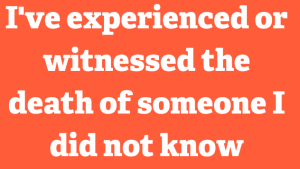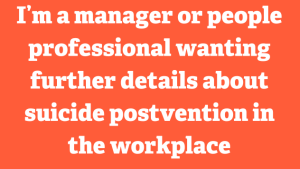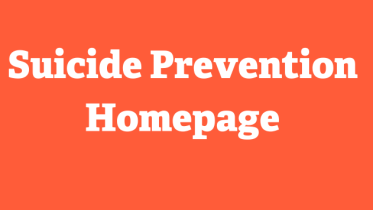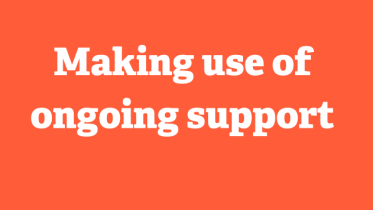After a suspected suicide, it’s important that we consider specific actions and support. This is because suicide can be associated with stigmas and emotions that complicate the process of grieving and coping, and it can be difficult for people who’ve been affected to know how best to respond. A single death can impact up to 135 people, and good postvention can reduce the negative effects for everyone.
Although suicide postvention typically refers to the actions taken after a death by suicide, some of the advice on this page can be used in the event of an attempted suicide.
Click to expand the headings below for more information about postvention.
What are the effects of suicide?
Suicide can affect people in many different ways, and this will be personal to each individual. Everyone will have had a different relationship with the person who has died, and they will also be affected by what else is going on at the time, as well as what support is available.
Whenever someone dies, it can be overwhelming. There can be many different and intense feelings involved, including grief, disbelief and sadness, among others. However, the process of grieving and coming to terms with the death, as well as getting support after a suicide, can be complicated by feelings of guilt, rejection or anger. There are also often many questions that just can’t be answered.
Being at the scene of a suicide can be distressing, shocking and traumatic. People in some job roles – including those in the fire and rescue service – are more likely to see someone who has died. Although they may not have known the person, even people with many years of experience in a job can be affected; they sometimes describe these encounters as profound experiences that can have an effect both at work and at home.
Sometimes, after a death or a call to a suicide, it can feel like you’ve got to just carry on with work, put others first, or not show that it has affected you. But this can impact how well you cope – now or in the future. It can also be helpful to others who have been affected if you share that the experience has had an emotional impact on you too.
What does postvention involve?
Suicide postvention aims to support everyone following a suicide in both the short and longer term. It also involves guidance on approaches to communication and processes for learning from deaths. This seeks to reduce the likelihood of suicide clusters (i.e. there being two or more linked suicides within a short period of time).
The following points can be useful for people involved in postvention after a suspected suicide. Those in management positions will find further guidance in the Managers Guide .
In the acute/immediate phase (the first days and weeks)
- Consider how you’ll communicate about the death. Some suggestions include using compassionate language, not talking about the specifics of the death and limiting posts on social media during the early days. It can be helpful to consult with the family (or the person in an attempted suicide) about how best to communicate.
- Many people can have intense emotions and thoughts, and they may find it hard to talk about their feelings. It helps if you can find a safe place to debrief or talk and question openly and honestly while feeling connected with those around you/them.
- Consider any changes that might be needed by you or others to help with coping (e.g. taking some time away, temporary work change requests, time to attend the funeral, etc.).
- Encourage others to connect with support options and consider accessing them yourself. Have a look at ‘Sources of Support’ for available options.
- A sense of community cohesion and belonging can be helpful – try encouraging people to reflect and support those who’ve been affected.
- There’ll be many practical arrangements that need to be taken care of (e.g. financial matters and funeral arrangements), and offering or accepting support can be helpful.
In the short term/recovery phase (first weeks and months)
- The effects of a suicide can continue for some time, and they can shift and change. Continuing to check in with people can allow them to express themselves – offering support can help them to not feel alone.
- Different people will need different support (e.g. grief and/or trauma support, depending on their wishes). Specialist services are available through the charity, and you could approach your HR or employee assistance programme services. There are also support groups run by those with lived experience of suicide, e.g. Hub of Hope which some can find helpful.
- There’s likely to be an inquest. Talking to people about what an inquest is and supporting their preparations for it can be useful. This can include both providing information to them about what the inquest will involve and ensuring that they’re supported before, during and after it.
Longer term/reconstructing phase
Even after time has passed, there can be ongoing effects from the death and so it can be helpful to continue to provide space for conversations about the person, check-ins with people and ongoing support, where this is wanted.
You may want to consider talking to family and friends about whether, and how, they would like the death to be remembered. Perhaps consider:
- whether they’d like memorials to be held when anniversaries or milestones are approaching.
- whether they’d like any legacy from the death (e.g. initiating a broader conversation about mental health).
What’s an inquest, and how can people be supported?
Any death by a sudden and unexplained cause – including a suspected suicide – will usually be investigated by a coroner during an inquest. The main purpose of the inquest is to understand the circumstances of the death and to ensure that it’s correctly registered.
After a death, the coroner’s office will contact the person’s next of kin and talk them through the inquest process. They will also speak to those at the scene and other family or people who knew them to understand what happened in the lead-up to their death. The inquest process can be lengthy (can be weeks and sometimes months before an inquest is held), and it can be difficult. More information on the inquest process can be found here.
Practical and emotional support is available throughout the inquest process. If you’re in England or Wales, you can contact the Coroner’s Courts Support Service. Scotland has their own services dedicated to providing Victim Information and Advice and signposting Bereavement Support Organisations. For Northern Ireland these is information for their coroner’s service, including family support and contacts for support.
Gordon and John’s story
Further guidance
We understand that people’s experiences will vary hugely, and there’s no one way to grieve or cope. We have further guidance available to help you understand more about what you can do and the range of possible support options. Please click on an appropriate tile to find out more:








